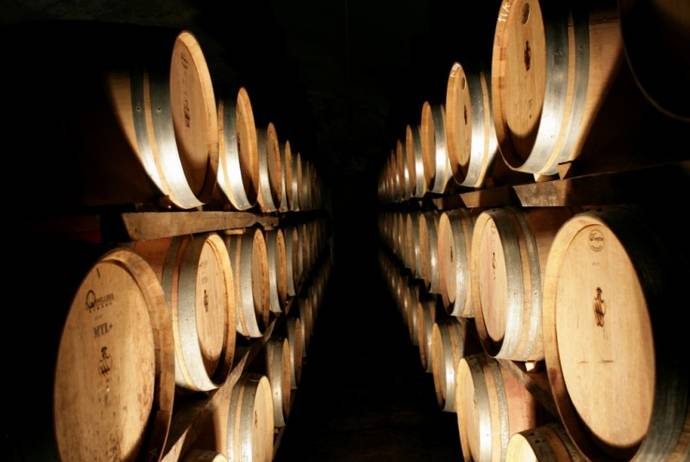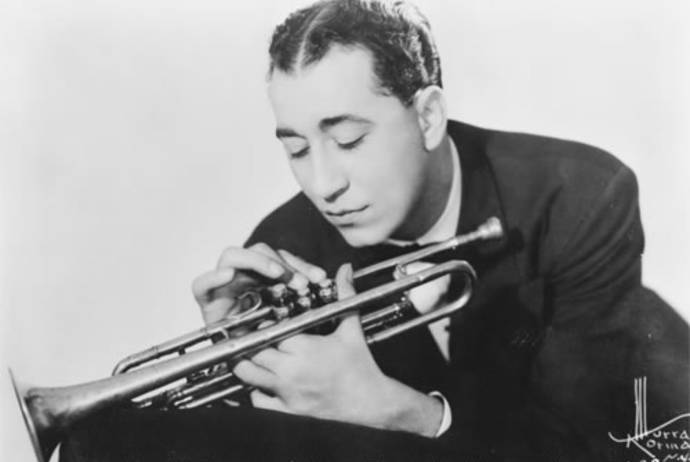(Photo by flickr)
From the window of my 2nd floor hovel on Bleecker St., I’m always catching little earfuls of conversation from passersby. There are more noises and sound bytes coming from them than from within my own apartment, and it’s safe to say that over the last highly political years, the topics I’ve heard the most have always pertained to the latest controversies in the halls of power. My opinionated neighborhood sitting at the intersection of all of downtown’s villages, a mélange of students, prematurely wealthy loft- dwellers, workers in the service industry, moribund immigrants of the old guard and artists, could provide the perfect sample study for the latest item in the news: Pope Benedict coming to town.
Rather than try my luck perched at the window, shouting out questions to startled strangers, I went out to get the word on the street. I found less diversity in people’s reactions to Pope Benedict XVI than I had hoped, but that is after all, an honest study. Benedict XVI, or Ratzinger as many called him (as if in rejection of his papal title), is not terribly well-liked, both as Pope and person. Either the neighborhoods below 14th street are just as liberal as they’re stereotyped to be, or the new Pope is hopelessly stuck in the shadow of John Paul II .
Here’s what the Downtowners had to say:
Luke, 22, law student
"I don’t even know his papal name. Benedict something or other? In Catholic school the Pope was just the Pope. I read he added new mortal sins to the existing ones which seems odd to me. He’s a former Nazi in the running; you’d think the Church would be more careful about picking someone like that. I just wish the Church would recognize it has an image problem."
John, 26, gay activist
“This Popes’s got the typical self-hating behavior of a gay man. The nature of his vitriol against gays, his writing of explicitly anti-gay tenets and his demeanor all point to that—are all homophobic symptoms of a man who deep-down is gay. And not to mention his suspect relationship with his personal secretary… everybody in the gay community thinks he’s a homosexual. But I’d just like to know he can spread all this hatred? It’s anti-Christian. Jesus himself said, ‘there shall be a new law that supersedes the old: Love each other.’ Everything he does seems to be dictated by hatred.”
Lucy, 49, pastry chef (Italian American, Catholic)
“I don’t think the abuse cases are really the Pope’s fault. What can he do about them from the Vatican anyways? And I don’t think the Pope has to be an Italian. John Paul II wasn’t Italian and I was perfectly happy with him. Frankly I don’t want to say anything bad about the Pope.”
Rebecca, 21, student (Jewish, agnostic)
“This Pope scares me. He used to head this draconian Vatican division, under John Paul II, that was like the modern version of the Spanish Inquisition. He’s a Pope straight out of the Middle Ages.”
Sheila, 28, store clerk (African-American)
“I think he tries to help people, you know. But my boss says he’s a Nazi.”
James, 31, jeweler
“The Church wouldn’t exist without gay men—meaning gay priests. It’s disgusting the way the Pope attacks the gay community. I just wish the Catholic Church would credit the pillars of the institution for what they are, credit them for helping the Catholic faith survive basically. I’m relieved someone’s addressing the problem of molestation but this Pope isn’t doing enough about it. I wish there were another Pope assassination attempt! I mean, not like I would do it!
Nora, 22, student
“I don’t think most people know much about the current Pope. Just that he’s a hardliner and a meanie compared to the last Pope. The last Pope had a much friendlier face. As a Jew, I felt warmer toward him.”
Javier, 32, bartender (Mexican immigrant)
“I miss the old Pope. It looked me to like he used to go to South and Central America more—didn’t he go like six times?—and that he cared more about Latinos. And when it comes to sex scandals I just think it happens in all the religions. I mean, look at those people in Texas—what religion are they?—that trapped like hundreds of kids and were abusing them! Some of my Mexican friends are going to go see the Pope at Yankee Stadium but I don’t really feel like going.”
Frank, 25, video artist
“The Pope is irrelevant. Nobody gives a crap about him and he can’t rebound from these recent scandals anyhow.”
Kasha, 53, housekeeper (Polish immigrant, in the U.S. for 5 years)
“I don’t like this new Pope all that much. He’s flat and he has a way of speaking that’s without emotion and dry. I miss my old Pope but maybe there isn’t anyone who can be good like he was. He was for the young, the old, the sick. Maybe because I’m a Polish girl I felt very close to him—closeness I don’t feel at all with this Pope. Pedophilia is a delicate argument but I don’t think this Pope is doing enough about it.”
Pauline, 40, babysitter/Chinese teacher (Chinese-American, Catholic)
“I think the Church has an image problem. It bothers me and I don’t think this Pope is helping matters any. To me it’s why so many people are converting to other Christian faiths, like Evangelism.”
Jimmy, 23, hedge fund analyst (Anglican, mother is a reverend)
“As a Pope he’s pretty milk and toast. But as a Cardinal, Ratzinger was vicious, a Grand Inquisitor. And from my perspective as a Protestant, what he said when he was elected Pope just revolted me: 'The church will be healed by my presence'. Like he’s a deity or something. I think Ratzinger was brought in just to contrast John Paul II and undo Vatican II. And he’s misogynistic, against nuns saying mass because they don’t have penises! He hasn’t really done anything to piss me off yet, but I’m sure he will.”
Ahmed, 43, store clerk (Pakistani immigrant)
“I think everybody should love each other and that’s that. I don’t know if I like this Pope or not but the key thing is having respect for everyone and a respect for all religions.”
Frank, 38, doorman (Croatian immigrant, in the U.S. for 15 years)
“At first when this Pope was elected I was disappointed. He’s against the idea of women priests. Changes are just so slow in the Catholic Church… And I’m tired of these endless arguments about abortion and stem-cell research. Even if I’m a practicing Catholic I’m pro-choice and for stem-cell research and I don’t think it should be the church deciding on these matters. It might just be that since I came to America my views have liberalized a bit. On the pedophile scandals, I’m not sure how I feel because I know a priest who’s been accused of that. His name is Kavanagh; he’s sort of a big-shot in the Catholic Church in New York, a fundraiser, a friend of Cardinal Egan’s. He married me any my wife. And now he’s been removed from his post and he’s waiting to hear judgment on his case. My hunch is that the accusations are false. I want to be a good Catholic but I’m not sure the Pope is leading us in the right direction. I’m a Democrat and I don’t want that to conflict with being a Catholic. It’s not a black-and-white world and this Pope’s black-and-white mentality is something I think he has in common with Bush. I miss John Paul II, but I’m still willing to give Benedict a chance and see what he does.”
 ble food and wine offerings, seminars were held by the president of the Consortium, Marco Pallanti, and renowned sommelier-cum-writer, David Lynch. The evening's elegant guests—surely people from the neighborhood, if gold buttons and bow-ties are any indication—buzzed about rosy-cheeked and jovial, and if in the beginning they had quietly scrutinized each pouring of the deep red stuff, two hours later they had become irrepressibly voluble, slapping backs and scouring the dessert trays for more chocolate truffles.
ble food and wine offerings, seminars were held by the president of the Consortium, Marco Pallanti, and renowned sommelier-cum-writer, David Lynch. The evening's elegant guests—surely people from the neighborhood, if gold buttons and bow-ties are any indication—buzzed about rosy-cheeked and jovial, and if in the beginning they had quietly scrutinized each pouring of the deep red stuff, two hours later they had become irrepressibly voluble, slapping backs and scouring the dessert trays for more chocolate truffles. .jpg)

































 But that same southern Italian element would turn to his advantage—and not just to win the hearts of sex symbols like Jean Harlow. Many commentators in the documentary, including radio host Ron Cannatella and jazz-pop authority Will Friedwald, agree that Prima’s background set him apart musically and the results are best observed in pieces like the much-adored “Angelina” (1944) and the humorous, anecdotal “Please No Squeeza da Banana” (1945). Prima would also use, to comic effect, a gibberish Italian dialect in the middle of his songs. It was part of an onstage game he played with his most famous female collaborator, Keely Smith (there would be many female costars over the years, and more often than not, they also became Prima’s wives). Prima, a wild crazy kid on stage, spouted the mangled old-world Italian phrases while Smith, a poised girl with a pixie haircut and a dead-pan stare, tried to repeat them for laughs. Louis Prima’s Italian identity was the twist he brought to jazz-pop in the 1940’s and 50’s and possibly, along with his eager-to-please repertory, what has prevented him from being fully considered a jazzman by jazz wonks. In the estimation of many historians his music wasn’t pure enough, and his style too much that of a showman. But if being the consummate showman produces timeless hits like “Sing, Sing, Sing” (1936) and puts Louis Prima in the ranks with Frank Sinatra—with just as much or more charisma than Old Frankie had—being impure may not matter so much after all.
But that same southern Italian element would turn to his advantage—and not just to win the hearts of sex symbols like Jean Harlow. Many commentators in the documentary, including radio host Ron Cannatella and jazz-pop authority Will Friedwald, agree that Prima’s background set him apart musically and the results are best observed in pieces like the much-adored “Angelina” (1944) and the humorous, anecdotal “Please No Squeeza da Banana” (1945). Prima would also use, to comic effect, a gibberish Italian dialect in the middle of his songs. It was part of an onstage game he played with his most famous female collaborator, Keely Smith (there would be many female costars over the years, and more often than not, they also became Prima’s wives). Prima, a wild crazy kid on stage, spouted the mangled old-world Italian phrases while Smith, a poised girl with a pixie haircut and a dead-pan stare, tried to repeat them for laughs. Louis Prima’s Italian identity was the twist he brought to jazz-pop in the 1940’s and 50’s and possibly, along with his eager-to-please repertory, what has prevented him from being fully considered a jazzman by jazz wonks. In the estimation of many historians his music wasn’t pure enough, and his style too much that of a showman. But if being the consummate showman produces timeless hits like “Sing, Sing, Sing” (1936) and puts Louis Prima in the ranks with Frank Sinatra—with just as much or more charisma than Old Frankie had—being impure may not matter so much after all. 


